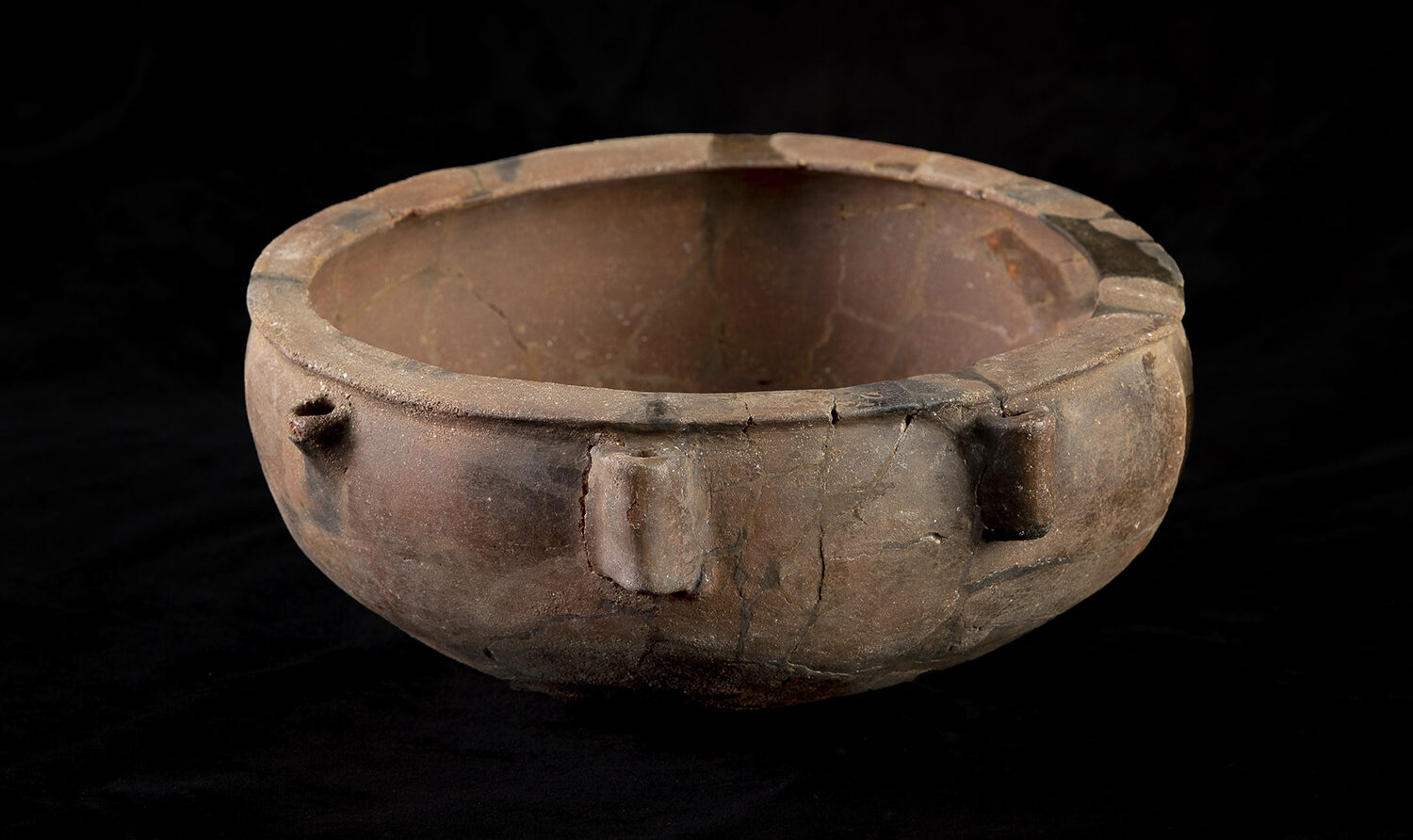
Pottery
4.300-3.900 BC
La Bassa de Fonteta (Forellac - Baix Empordà)
On 1 July 1981 Albert Garcia, a resident of Celrà, informed the Girona Regional Government’s Archaeological Investigation Service that what looked like a prehistoric pottery vessel and human bones could be seen on the edge of a clay extraction pond near the village of Fonteta (Forallac). Enriqueta Pons, an archaeologist working for the aforementioned service, asked Júlia Chinchilla and me to go and take a look.
When we got there we found that on the edge of the pond there was indeed a vessel broken in the middle and at the bottom of a possible tomb that took advantage of a natural crack in the local calcareous rock. We immediately began an excavation that lasted for three days. We began at the top so as not to damage what remained of the grave, half of which had slipped into the pond. We thought it was probably an atypical burial in the tradition of individual Middle Neolithic pit tombs in Catalonia.
Preserved at the bottom of the tomb were a few leg bones and two teeth from a single individual. We could not tell the gender or stature of the deceased, nor in what position they had been buried. The pot was resting on a flat slab right at the bottom between the skeleton’s legs. Beneath it was a sandstone mortar pestle and a limestone mill pestle.
All the contents of the tomb and the land that had slipped into the bottom of the pond were sifted with very good results, that were completed with that which Albert García had taken home. We collected grave goods composed of a round punch and part of a rectangular bone spatula; a mortar pestle and another from a mill; a pot with an incurving T-shaped lip, four small vertical tunnel-shaped handles and a spout below the edge (23.6 cm opening); a large cup with a low ridge and two large vertical tunnel-shaped handles; fragments of two cylindrical pedestal vessels, one with holes in the base and decorated with squared and engraved triangles or rhombuses, and a small, plain subspherical bowl. When we sifted the soil inside the vessel we found charred fig seeds (Ficus carica).
In 1981, at the time of the discovery of this tomb, which was unique for the Montboló-Chassey grave goods it contained, we did not know of many parallel archaeological contexts with both Montboló and Chassey pottery that illustrate the later phase of the Early Middle Neolithic (4300-3900 BC). Nevertheless, we placed it in a late Montboló period, in a transitional phase to the Chassey.
The panorama has since changed substantially. In the northern Pyrenees, cave tombs (Montou, Belestar) and a necropolis (Camp del Ginebre) from that period have been excavated. In Alt Empordà (the Ca n’Isach habitat, Tumulus-II of Vilanera) and Vallès Occidental (the habitats of Can Roqueta, Vinya del Regalat and Els Mallols), excavated villages and tombs have yielded late Montboló-style pottery coexisting with other Chassey-types. The Bassa de Fonteta tomb was more than 10 years ahead of the discovery of this late phase of the Montboló group, which is now well recognised.
Josep Tarrús Galter
